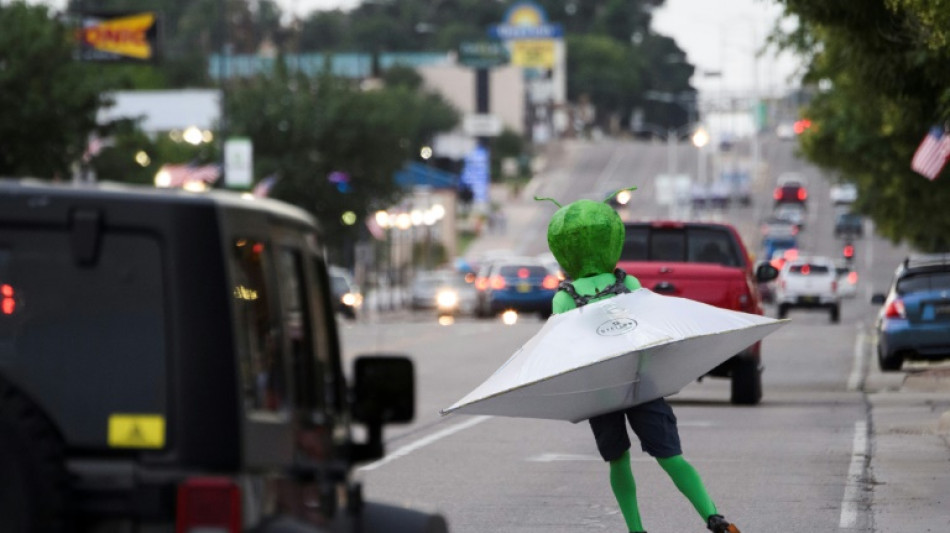

NASA joins the still controversial search for UFOs
NASA on Thursday officially joined the search for UFOs -- but reflecting the stigma attached to the field, the US space agency wouldn't identify the director of the new program tasked with tracking mystery flying objects.
The official's appointment is the result of a year-long NASA fact-finding report into what NASA calls "unidentified anomalous phenomena (UAP)."
"At NASA, it's in our DNA to explore -- and to ask why things are the way they are," NASA chief Bill Nelson said.
An independent team of 16 researchers concluded in the report that the search for UAPs "demands a rigorous, evidence-based approach."
NASA is well positioned to play a prominent role, thanks to its satellite capabilities and other technical assets. But the agency stressed in its report that any findings of possible extraterrestrial origin "must be the hypothesis of last resort -- the answer we turn to only after ruling out all other possibilities."
"We want to shift the conversation about UAP from sensationalism to science," Nelson said.
Even if NASA has long explored the heavens, hunting for the origin, identity and purpose of a growing number of unexplained flying objects over planet Earth is bringing unprecedented challenges.
Military and civilian pilots keep offering a multitude of reports on strange sightings. But decades of movies and sci-fi books about aliens mean the entire topic is mostly laughed off by the public as the territory of cranks.
That atmosphere explained the unusual decision by NASA to decline to identify the lead UAP official's identity.
"We need to ensure that the scientific process and methods are free," said Daniel Evans, who worked on the year-long NASA report leading to the announcement.
"Some of the threats and the harassment have been beyond the pale quite frankly," Evans said.
- 800 events -
There have been more than 800 "events" collected over 27 years, of which two to five percent are thought to be possibly anomalous, the report's authors said during a May meeting.
These are defined as "anything that is not readily understandable by the operator or the sensor," or "something that is doing something weird," said team member Nadia Drake.
The US government has begun taking the issue of UAPs more seriously in recent years, in part due to concerns that they are related to foreign surveillance.
One example of a still unexplained phenomenon was a flying metallic orb spotted by an MQ-9 drone at an undisclosed location in the Middle East, which was shown to Congress in April.
NASA's work, which relies on unclassified material, is separate from a parallel Pentagon investigation, though the two are coordinating on matters of how to apply scientific tools and methods.
In July, a former US intelligence officer made headlines when he told a congressional committee he "absolutely" believes the government is in possession of unidentified anomalous phenomena -- as well as remains of their alien operators.
"My testimony is based on information I've been given by individuals with a longstanding track record of legitimacy and service to this country -- many of whom also shared compelling evidence in the form of photography, official documentation and classified oral testimony," David Grusch told lawmakers.
Earlier this week, the alleged bodies of two "non-human" beings were presented during a congressional hearing in Mexico, generating a mixture of surprise, disbelief and ridicule on social media.
The purported mummified remains, which had a grayish color and a human-like body form, were brought by Jaime Maussan, a controversial Mexican journalist and researcher who reported finding them in Peru in 2017.
Y.Schmitz--RTC



